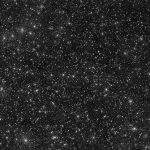Key Takeaways:
- Recent research identifies 19 asteroids believed to originate from interstellar space.
- These asteroids were likely captured by the Sun’s gravity in the early stages of the Solar System.
- Observations suggest that these asteroids have unique orbits, differing from typical Solar System objects.
- The study sheds light on the Sun’s early birth cluster and the interplay of interstellar matter in our system.
- Further research on these asteroids could offer insights into Solar System formation and chemical composition.
In a groundbreaking revelation, astronomers have pinpointed 19 asteroids that they suspect hail from interstellar space. While ‘Oumuamua and comet 2I/Borisov confirmed the occasional visitation of celestial bodies from beyond our Solar System, it’s now believed that many more interstellar asteroids have long resided within our cosmic neighborhood. These asteroids, dating back to when the Solar System was in its infancy, were likely captured from another star system.
During this early phase, stars in the vicinity influenced each other’s gravitational pull significantly. This phenomenon facilitated the migration of asteroids from one star system to another. The initial discovery in 2018 led by astronomers Fathi Namouni and Helena Morais identified a peculiar asteroid named 2015 BZ509, later named Kaʻepaokaʻawela. Its retrograde orbit, opposite to most objects in the Solar System, indicated an interstellar origin, with capture occurring some 4.5 billion years ago.
The recent study examined Centaurs and trans-Neptunian objects characterized by high orbital inclination, occasionally approaching a polar orbit. Several of these objects exhibited retrograde orbits, hinting at a tumultuous history within our Solar System.
The research team simulated the orbits of 17 Centaurs and two trans-Neptunian objects, retrogressing 4.5 billion years. Intriguingly, these 19 asteroids deviated from the expected flat disc orbiting the Sun, with only a handful maintaining stability. This finding strongly supports the hypothesis that they were captured from interstellar space, challenging the notion of their Solar System origin.
Further examination of these asteroids promises to validate these findings and potentially unveil more interstellar wanderers. This discovery holds profound implications for understanding the Sun’s early celestial surroundings, the mechanics of interstellar asteroid capture, and the influence of interstellar matter on the Solar System’s composition and evolution.
The research represents a significant leap in deciphering the similarities and distinctions between Solar System-born and interstellar asteroids, offering invaluable insights into planetary system formations.


